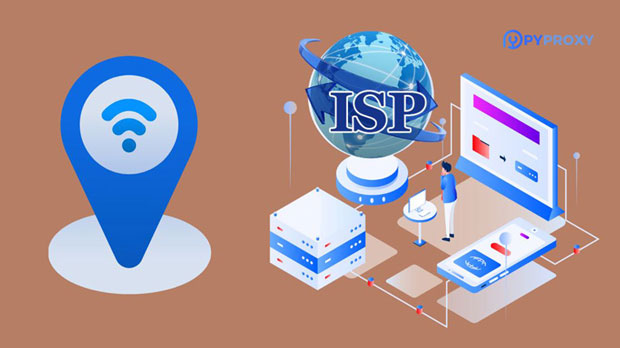PYPROXY the best Socks5 proxy site and how it helps to break geo-restrictions?
In today's digital world, access to online content can often be restricted based on geographical location, whether for streaming services, websites, or other online resources. One of the most effective tools for overcoming such limitations is the use of socks5 proxies. SOCKS5 proxies are a powerful tool that helps individuals and businesses bypass geo-restrictions by masking their IP addresses and routing their internet traffic through servers located in different parts of the world. This not only grants access to restricted content but also provides enhanced privacy and security. This article explores how SOCKS5 proxies work, their benefits, and how they can help users navigate geographic restrictions effectively. What are SOCKS5 Proxies?Before delving into how SOCKS5 proxies help bypass geo-restrictions, it is essential to understand what they are and how they function. SOCKS (Socket Secure) is an internet protocol that facilitates the routing of network packets between a client and a server via a proxy server. The SOCKS5 version is the latest and most advanced version of this protocol. It allows for a broader range of protocols and authentication methods, offering improved performance and security compared to earlier versions. Unlike HTTP proxies, which only work with web traffic, SOCKS5 proxies are versatile and can handle any type of internet traffic, including email, FTP, peer-to-peer (P2P), and more.How SOCKS5 Proxies Help Bypass Geographical RestrictionsGeographical restrictions, also known as geo-blocking or geo-fencing, are policies implemented by websites or streaming services to limit access to content based on the user's location. These restrictions are typically enforced using the user's IP address, which provides information about their geographical location. When a user attempts to access content that is restricted in their region, the server detects the IP address and blocks the request. SOCKS5 proxies help circumvent these restrictions by masking the user's real IP address and replacing it with an IP address from a different location, typically in a region where the content is accessible. When a user connects to a socks5 proxy server, the request is routed through that server, making it appear as though the user is browsing from a different geographic location. This enables the user to access websites, streaming services, or other online resources that would otherwise be unavailable in their region.The Technical Mechanism Behind SOCKS5 ProxiesTo understand how SOCKS5 proxies effectively bypass geo-restrictions, it is important to look at the technical mechanisms that enable them to do so. 1. IP Masking and Location Spoofing SOCKS5 proxies work by masking the user’s original IP address with the IP address of the proxy server. This is the fundamental process of location spoofing, where the server appears to be located in a region where the requested content is accessible. For example, a user in a country where a specific streaming service is unavailable can connect to a socks5 proxy server located in a country where the service is available. The content is then accessible because the server recognizes the proxy IP as belonging to an authorized region.2. Protocol Versatility SOCKS5 proxies are protocol-independent, which means they can handle a variety of data types, including HTTP, FTP, and even peer-to-peer (P2P) traffic. This makes SOCKS5 proxies a more robust solution for overcoming geo-restrictions compared to other proxies, which might only support certain types of traffic. By supporting a wider array of protocols, SOCKS5 proxies ensure that users can access all kinds of content, not just web pages but also file transfers, torrents, and more.3. Data Encryption and Security One of the key advantages of SOCKS5 proxies is that they can be configured to provide additional security and privacy features, such as data encryption. This is particularly important when bypassing geo-restrictions, as it ensures that the user’s online activity remains secure and private. Unlike standard HTTP proxies, which lack encryption, SOCKS5 proxies offer an extra layer of protection against eavesdropping and potential cyber threats. This makes SOCKS5 proxies a preferred choice for users who are concerned about their online security while accessing geo-restricted content.Benefits of Using SOCKS5 Proxies for Geo-Restriction Bypass1. Access to Global Content One of the primary reasons users turn to SOCKS5 proxies is to access content that is unavailable in their country. Whether it's a streaming service like a video platform, a restricted website, or an online game, SOCKS5 proxies allow users to bypass the geographic limitations imposed by these services. By connecting to servers in different regions, users can enjoy a virtually unrestricted internet experience, gaining access to a wealth of global content that would otherwise be blocked.2. Improved Privacy and Anonymity SOCKS5 proxies offer enhanced privacy by masking the user's IP address, making it difficult for websites to track their online activities. This is especially important for individuals who value their anonymity online. By using a SOCKS5 proxy, users can browse the internet without revealing their true location or personal information, which can help protect them from targeted ads, tracking, and data collection.3. Bypass Censorship and Firewalls In many countries, certain websites or online services are blocked or heavily censored. For individuals living in these regions, SOCKS5 proxies can provide a reliable way to bypass government-imposed restrictions. Whether it's accessing social media platforms, news websites, or streaming services, SOCKS5 proxies can help users sidestep firewalls and censorship, ensuring free and open access to the internet.4. Enhanced Performance for Certain Activities SOCKS5 proxies are often used by gamers, torrent users, and those engaged in other bandwidth-intensive activities. The protocol's low latency and ability to handle large amounts of data make it an ideal choice for streaming high-quality video, downloading large files, or participating in online gaming. By using a SOCKS5 proxy, users can access content or services with minimal delay, ensuring a smooth experience even when bypassing geo-restrictions.Challenges and Considerations When Using SOCKS5 ProxiesWhile SOCKS5 proxies provide significant advantages for bypassing geo-restrictions, there are also a few challenges and considerations to keep in mind:1. Reliability of Proxy Servers Not all SOCKS5 proxies are equal. Some may suffer from slow speeds, unreliable connections, or frequent downtime. It's crucial to ensure that the proxy server being used is of high quality and can handle the demands of bypassing geo-restrictions. Low-quality proxies might result in poor performance, making them less effective for activities such as streaming or gaming.2. Legal and Ethical Concerns Using SOCKS5 proxies to bypass geo-restrictions can raise legal and ethical questions, especially if it involves accessing content that is copyrighted or restricted in certain regions. Users should be aware of the laws in their country and ensure that they are not violating any terms of service or engaging in illegal activities.3. Potential for Detection While SOCKS5 proxies offer a high degree of anonymity, sophisticated detection techniques may sometimes be able to identify proxy usage. Some websites and services employ advanced measures to detect and block proxy traffic, making it harder to bypass geo-restrictions. In such cases, users may need to explore additional tools, such as virtual private networks (VPNs), to enhance their anonymity and bypass detection.Conclusion: Why SOCKS5 Proxies Are an Effective Solution for Geographical RestrictionsIn conclusion, SOCKS5 proxies are an incredibly powerful tool for overcoming geographical restrictions, enabling users to access blocked content, protect their privacy, and bypass online censorship. With their ability to mask IP addresses, support various protocols, and offer encryption for enhanced security, SOCKS5 proxies offer a reliable and versatile solution for navigating the internet without limitations. However, users must be mindful of the potential challenges and ensure they are using high-quality proxies to achieve the best results. By understanding how SOCKS5 proxies work and their benefits, users can effectively unlock global content and enjoy a more open and secure internet experience.
2024-12-30

























































